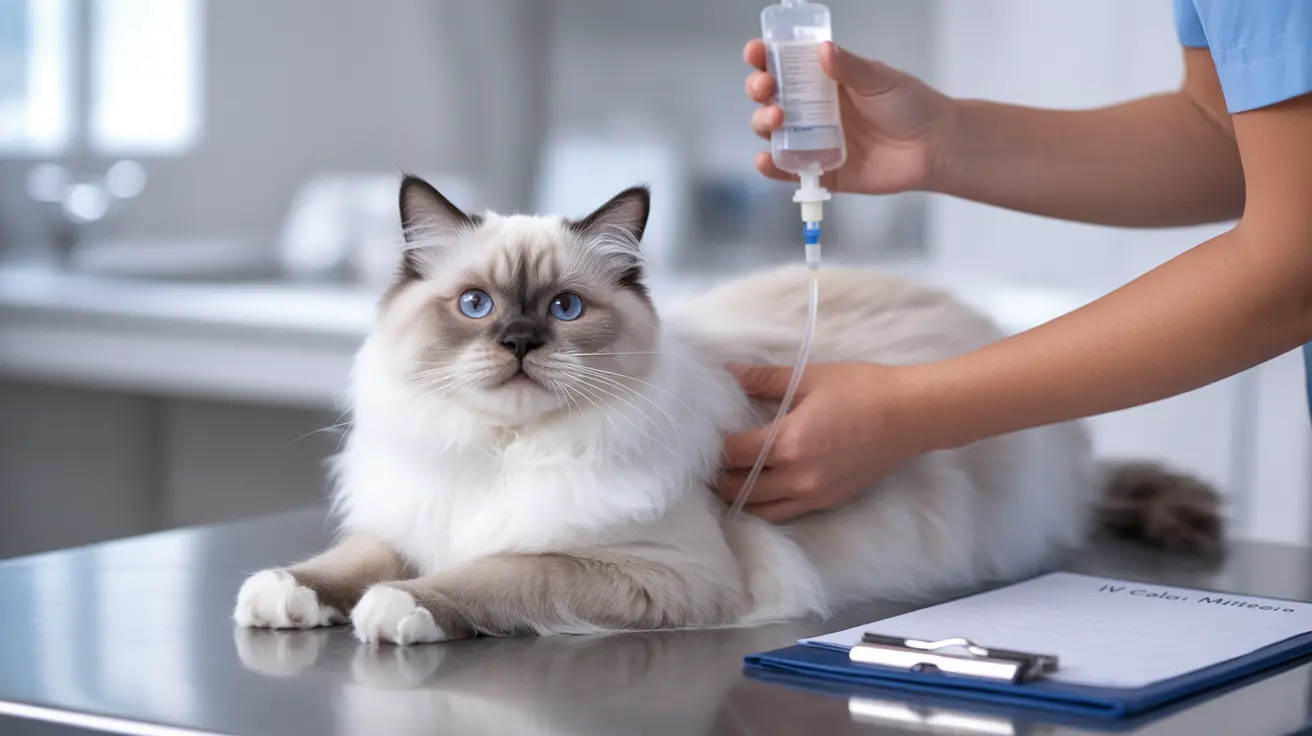What is Parathyroid Hormone and Why is it Important?
Parathyroid hormone is a crucial regulator of calcium levels in your cat's body. Produced by the parathyroid glands - tiny tissues located near or within the thyroid glands in the neck - PTH maintains proper calcium and phosphorus balance by controlling their absorption, elimination, and storage in bones.
When PTH levels drop too low, cats can't maintain proper calcium levels in their blood, leading to a dangerous condition called hypocalcemia. This mineral imbalance can affect multiple body systems, particularly nerve and muscle function.
Common Causes of Low Parathyroid Hormone
Several factors can lead to decreased PTH production in cats:
- Surgical complications during thyroid gland removal
- Immune system attacks on the parathyroid glands
- Natural degeneration of the parathyroid glands
- Rare inherited conditions
The most common cause is accidental damage or removal of the parathyroid glands during surgery for hyperthyroidism, another common feline endocrine disorder.
Recognizing the Signs of Low PTH
Cats with low parathyroid hormone typically show various neurological and muscular symptoms:
- Muscle tremors and twitching
- Seizures
- Unsteady walking (ataxia)
- Lethargy and depression
- Face rubbing and restlessness
- Loss of appetite
- Cataracts
- Slow heart rate
These symptoms can develop suddenly or gradually over time, making early recognition crucial for successful treatment.
Diagnosis and Treatment Options
Veterinarians diagnose low parathyroid hormone through:
- Blood tests measuring calcium, phosphorus, and PTH levels
- Physical examination
- Medical history review
- Additional tests like ECG when needed
Treatment typically involves two phases:
Emergency Treatment
For severe cases with dangerously low calcium levels, immediate hospitalization is necessary. Treatment includes:
- Intravenous calcium supplementation
- Close monitoring of heart function
- Anti-seizure medication if needed
Long-term Management
Most cats require ongoing care including:
- Daily oral calcium supplements
- Vitamin D supplements to help calcium absorption
- Regular blood tests to monitor levels
- Dose adjustments as needed
Living with Low Parathyroid Hormone
With proper treatment and monitoring, cats with low parathyroid hormone can live normal, healthy lives. Success depends on:
- Consistent medication administration
- Regular veterinary check-ups
- Monitoring for recurring symptoms
- Quick response to any health changes
Frequently Asked Questions
What causes low parathyroid hormone (PTH) levels in cats and how does it affect their calcium balance?
Low PTH levels most commonly result from surgical damage during thyroid operations or immune-mediated destruction of the parathyroid glands. Without sufficient PTH, cats cannot properly regulate calcium levels, leading to dangerously low blood calcium and high phosphorus levels.
What are the common signs and symptoms of hypoparathyroidism in cats that pet owners should watch for?
Key symptoms include muscle tremors, seizures, weakness, unsteady gait, lethargy, excessive face rubbing, and loss of appetite. In severe cases, cats may develop slow heart rate and raised third eyelids.
How is hypoparathyroidism diagnosed in cats, and what laboratory tests are involved?
Diagnosis involves blood tests measuring total and ionized calcium, phosphorus, and PTH levels. Additional tests may include kidney function tests, urinalysis, and electrocardiography to assess the condition's impact on heart function.
What emergency treatments are available for cats with severe hypocalcemia due to low PTH?
Emergency treatment typically involves hospitalization for intravenous calcium gluconate administration, careful cardiac monitoring, and supportive care. Anti-seizure medications may be needed for severe symptoms.
How is long-term management of feline hypoparathyroidism performed, and can affected cats live normal lives?
Long-term management involves daily oral calcium and vitamin D supplements, regular blood monitoring, and dose adjustments as needed. With proper treatment and monitoring, most cats can maintain an excellent quality of life.
Conclusion
While low parathyroid hormone in cats is a serious condition, understanding its signs and seeking prompt veterinary care can lead to successful management. With proper treatment and ongoing monitoring, affected cats can continue to live happy, healthy lives. Always consult with your veterinarian if you notice any symptoms that might indicate low PTH levels in your cat.






